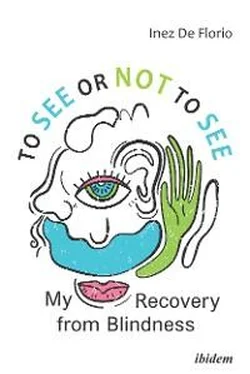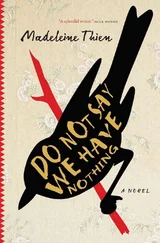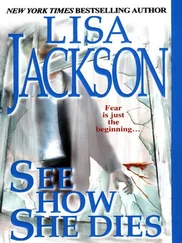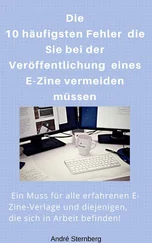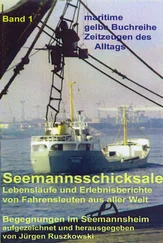When he was diagnosed with a genetically caused eye disease for which no promising therapy existed, he was twelve years old. About ten years passed until he got totally blind. That delay gave him time to reflect on what sight really means. For most people seeing is immediate and effortless. You open your eyes and you see the surrounding world. To see means to believe; it is equated with the truth or with reality. Many experts trace this back to the fact that the evolution has predestined us to give the priority to seeing. Encyclopedias of anatomy indicate that about 70 % of our ordinary perception is based on vision. That is right, of course, as long as you do not question these findings. Seeing is not everything. You can deduce this, as mentioned, from the fact that the brain of people born blind partly changes its functions. With me, too, parts of the neural network assumed functions which otherwise were reserved for eyesight.
Through the years, Lidsky stated that what we see is not the universal truth; it is not the objective reality. It corresponds instead to a unique and personal virtual reality constructed in an extraordinary way by our brain. From Lidsky’s point of view, seeing is an illusion that was destructed by and by as his sight diminished. Everybody is creating his own reality. To confirm his convictions, he mentions Helen Keller, the deafblind American civil-rights activist. She writes that much worse than blindness is the lack of vision. By the way, the quote from The Little Prince of Saint-Exupéry chosen as title for this chapter continues as you know: What is essential is invisible to the eye.
There is no doubt that Lidsky is an exception. He does not consider the loss of his eyesight as a restriction; on the contrary, to him, his blindness constitutes a personal enrichment. This attitude can be explained by the fact that his psychological immune system is extremely well developed.10 It protects an individual against the experience of negative emotions. Unconsciously, information gets ignored, transformed and reconstructed so that a disastrous event might seem more bearable for the person concerned. As visual feedback does not reach Lidsky, his environment, especially his staff members, are obliged to give him verbal feedback. His disability forces them to say what they think and to avoid ambiguity. He communicates with them on a deeper level, and above all: His team knows that their point of view really counts.
Considering the cases of Kahawatte and Lidsky which are representative for many other visually impaired people, you can state that surgery does only make sense when there is a psychological strain. The wish to gain sight, however, is not very strong with many persons born blind. Of course, there are also things that blind people would like to see. Mike May, who lost his eyesight in an accident as a child, missed nothing in his life as a blind man.11 Nevertheless, he would have liked to see a landscape panorama and especially beautiful women with his own eyes. When he is successfully operated on in the middle of his life—it is a stem cell transplantation—, he has difficulties with facial recognition and perspective vision, which apparently still exist.12 As we will see below, others have even more serious problems with their newly acquired sense of sight. In some cases, successful surgery can even have highly negative consequences, including suicide.
The spectrum would not be complete, if I omitted another example of how a blind person dealt with his or her blindness. Saliya Kahawatte, as we have seen, takes his severe visual impairment without excitement and shapes his life following his conceptions. Isaac Lidsky considers his blindness even as gain as it permits him a deeper communication with his environment, especially in his professional life. He even seems to take pleasure in the stroke of fate that hit him unexpectedly. Some people, furthermore, have a special talent to learn from setbacks and take them as motivation to outreach for greater achievement. We can draw the conclusion that they learn from their mistakes. They surpass themselves. Without doubt there are people with such a growth-mindset not only among sighted, but also among blind persons.13
Another interesting example which I got to know later on is Andy Holzer, an Austrian born blind, who conquered the seven highest mountains in the world since the turn of the millennium. Already as a child he dreamed to climb Mount Everest someday, what by then no blind person had succeeded in doing. In 2014 he and his team were forced to abandon the ascent because of an avalanche accident. In the following year, Holzer had to finish a new attempt early because of a catastrophic earthquake. Somebody might assume that Holzer interpreted these failures as a sign to desist from tempting the fate. Far from it! On May 21, 2017 Holzer succeeded with two partners in ascending Everest up to the summit. Asking him about his perseverance you will discover that it was exactly the setbacks which encouraged him to insist. The account of his adventures is entitled: My Everest.14 With this title, he underlines that he has not simply climbed Mount Everest as many others before him. It is the particular challenge that was associated for him with the ascent. The reader of his book gets the impression that he considers setbacks to be part of everything—they seem to inspire him.
For myself, I was and I am far away from such extraordinary, admirable behavior. But at least I began to take surgery into account. I had enough time to weigh the pros and cons. Italian friends draw our attention to a Russian surgeon who operated near Milano. We decided to consult him in any case. After intense examinations he came to the conclusion that my chances of success were about fifty fifty. For that reason, he advised against the intervention. In case of failure it could be that I descended in complete darkness.
Quite often sighted people imagine that the world of a blind person is completely dark. But that is rarely the case. Nevertheless, only few people ask if a blind person sees anything and if so, what he or she is able to see. This is another proof for the awkwardness mentioned by Kahawatte that many sighted persons display in contact with the blind or visually impaired.
This is the main reason why I still remember the following conversation. At the beginning of our friendship Alina, the cousin of a schoolmate, asked me:
“What do you really see?”
I thought for a moment how to explain it to her, and then I said:
“My vision is quite blurred, as through dense fog. My world isn’t completely dark, but I don’t see colors. For me distance begins after an inch. I don’t perceive any objects that are further away.”
“So, you are very short-sighted. About how many diopters?”
I liked this concrete question very much. I would have been angry at an expression of compassion, surely without showing it.
“About 15 diopters. The right eye is somewhat more, the left a bit less.”
“I have heard that very short-sighted persons often suffer from cataract.”
“Yes, I was born with it; and there are some smaller malformations I’m not quite informed about.”
The eye cataract often made me see double images or a halation around the objects. Beyond that, I had great problems with spatial orientation and distances, but I was able to orient myself roughly. I tried to find positive aspects in all that. Then I saw the moon just with a light around it two or three times: ‘Gute Monde, ihr geht so stille …!’ (‘Good moons, you are going so quietly…!’)
Tactile navigation—the kinesthetic moving/touching of the body—is the total embodied awareness of a body in an environment. Knowledge is made corporeal with the sense of touch replacing that of sight as the primary mode of data gathering.
Читать дальше
